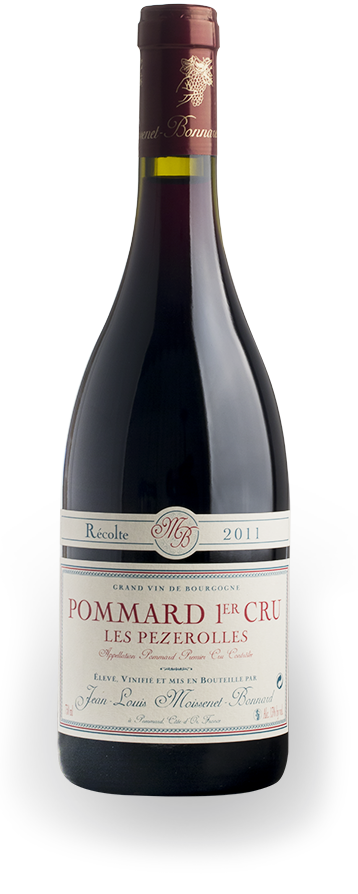- Les Tavannes
- Les Cras
- Les Petits Noizons
- Les Charmot 1er cru
- Les Epenots 1er cru
- Les Pézerolles 1er cru
Pommard « Les Tavannes »
The parcel
This place once belonged to the De Sauls de Tavannes family. Jean de Saulx and Marguerite de Tavannes married in 1509 and were the parents of Gaspard de Saulx de Tavannes, who became a Marshal of France in 1570. He died at Château de Sully. Our Pommard Les Tavannes consists of two neighbouring plots, one of 10 are 91 ca (about 0.2696 acres) planted in 1990 and the other of 11 are 53 ca (about 0.2849 acres) planted in 1973. Together they form a single vintage of 22 are 44 ca (about 0.5545 acres). Located below the Clos des Epeneaux, the vineyards have a south-easterly exposure and a clay-limestone soil - a Chassagne limestone.
To preserve biodiversity and mycorrhization, grass grows between the rows of vines and ground cover grows under the rows in both plots.
Winemaking and breeding
Grapes are picked entirely by hand, sorted and completely destemmed. They arrive whole in the fermenting room. Vinification takes 4 weeks, including 21 days for alcoholic fermentation. Then ageing takes place over 12 months in oak barrels, 30% of which are new.
Tasting
This is undoubtedly the domaine's most massive Pommard. Powerful, it is a jewel-in-the-rough that needs time to refine its many facets. Its superb crimson colour leads to a nose with notes of slightly jammy fresh fruit - burlat cherries, strawberries and raspberries - with a hint of undergrowth. The mouthfeel is bold, mineral and powerful. Noble tannins are present and persistent. For drinking from 2020.
Food and wine pairings
Main dishes: perfect with Normandy-style saltbush lamb pastilla, navarin of lamb, roast duck with figs and cherries, roast fillet of wild boar with pepper sauce.
Cheeses: Perail, Fontina Val d’Aosta, Fourme de Salers, Brie de Melun. Desserts: apple and pear cake, walnut cake, a dark chocolate and mirabelle fondant cake.
Ideal serving temperature: 16°.
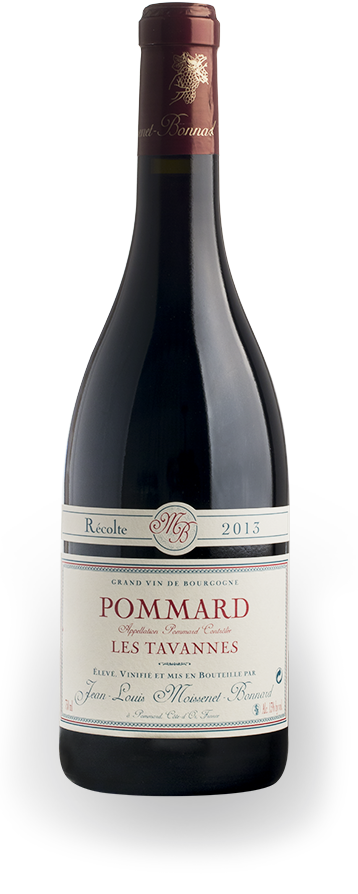
Pommard « Les Cras »
The parcel
"Les Cras" ("Ez crayz" in Old French) means chalk or limestone. In this case, it refers to a chalky area, a cluster of alluvial stones covered by soil.
It is a 44 year old plot with a surface area of 41 are 04 ca (about 1.0141 acres), adjoining the Pommard 1er cru vineyards of Clos Micault and Les Combes Dessus. To promote biodiversity, grass grows between the rows and ground cover under the rows.
Winemaking and breeding
Grapes are harvested by hand.
Vinification takes 3 weeks, including 12 days for alcoholic fermentation.
Then ageing takes place over 12 months in oak barrels, 30% of which are new.
Tasting
This Pommard, dark garnet in colour, offers a complex nose of spices, black fruits and undergrowth. The mouthfeel is rounded and balanced. The finish is enhanced by fine, crispy tannins.
Food and wine pairings
It is the perfect accompaniment for a leg of young wild boar, 7-hour lamb, stuffed aubergines, duck à la vanille, roast rack of lamb, beef rib, or turkey with chestnut stuffing.
And it is a tasty accompaniment to cheeses such as Epoisses, 24-month Comté and Munster. Ideal serving temperature: 16°.
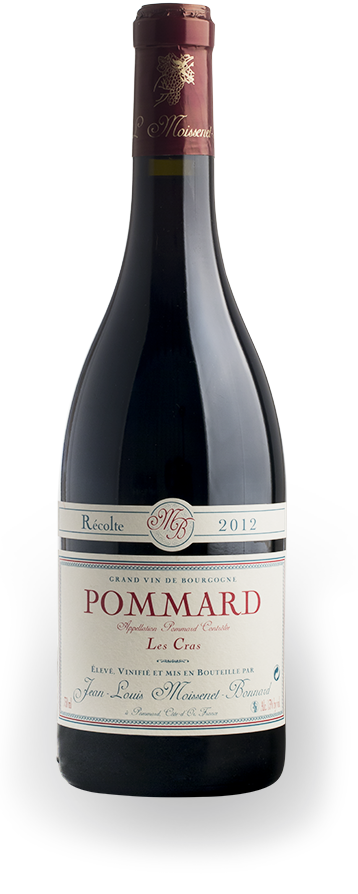
Pommard « Les petits Noizons »
The parcel
In dialect, "Les petits Noizons" is "es noyzons" or "en noyon". According to A. Marey-Monge, this terroir may have been covered with "noisetiers" (hazel trees) or "noyers" (walnut trees) before it was planted with vines. In the 13th century this plot belonged to Alix de Vergy, Duchess of Burgundy, and then to the Archbishops of Lyon. It subsequently passed to the Ducal domaine and then to the leading families in the region.
Planted in 1926, it covers 30 are 78 ca (about 0.7606 acres) located at the top of the slope (300 metres). With a south by south-east exposure, it enjoys excellent levels of sunshine that allow the grapes to mature well. This plot joined the domaine in 2001. To promote biodiversity and mycorrhization, grass grows between the rows and ground cover under the rows.
Winemaking and breeding
Grapes are harvested by hand, sorted and destemmed. They arrive whole in the fermenting room. Vinification takes 4 weeks, including 21 days for alcoholic fermentation. Then ageing takes place over 18 months in oak barrels, 30% of which are new.
Tasting
This is a powerful, racy Pommard, with elegant tannins, notes of spices, undergrowth and very ripe fruit (blackcurrants, blackberries), and a long aftertaste
It is truly THE gentleman among our Pommards!
Food and wine pairings
Main dishes: perfect with woodcock with two juniper berries, capon à la vanille, civet of beef cheek.
Cheeses: Cantal, L'Etivaz, Sbrinz.
Coté dessert : Desserts: raspberry tart, hazelnut and chocolate mille crepes, chocolate and saffron mille feuilles.
Ideal serving temperature: 16°.
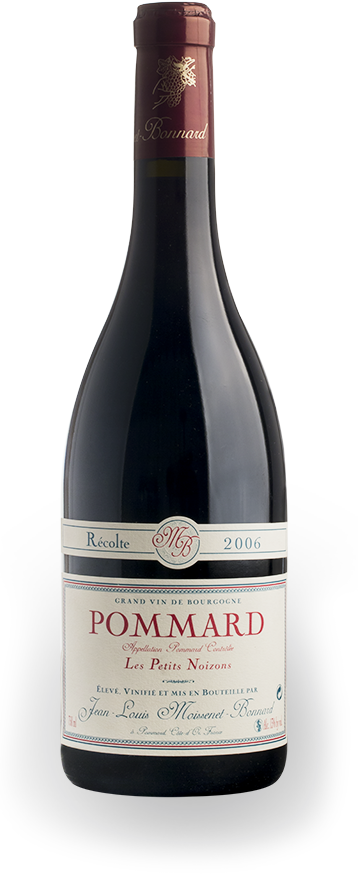
Pommard 1er cru « Les Charmots »
The parcel
In 1431 there is a mention of "en charmet". This could come from Old French "charmoye", meaning a "place planted with hornbeams", but in Burgundy "charme" also refers to fields that have fallen fallow.
This plot, covering 20 are 75 ca (about 0.6363 acres) and containing vines planted in 1955, faces south by south-east. To promote biodiversity and mycorrhization, grass grows between the rows and ground cover under the rows.
Winemaking and breeding
Grapes are harvested by hand, sorted and destemmed. Vinification takes place over 18 months in oak barrels, 30% of which are new.
Tasting
This is surely the most feminine of our Pommards, having an alluring, rich character, with dense, silky tannins, a floral note of spicy roses, and a long aftertaste that is delicate and very sensual.
Food and wine pairings
It is the perfect accompaniment for veal filet mignon with mustard and herbed potatoes, veal blanquette "poupiou", bison medallion with blueberries.
Cheeses: Beaufort, well-aged Brie, Chaource, Livarot.
Dessert: chocolate macaron, dark chocolate frozen charlotte.
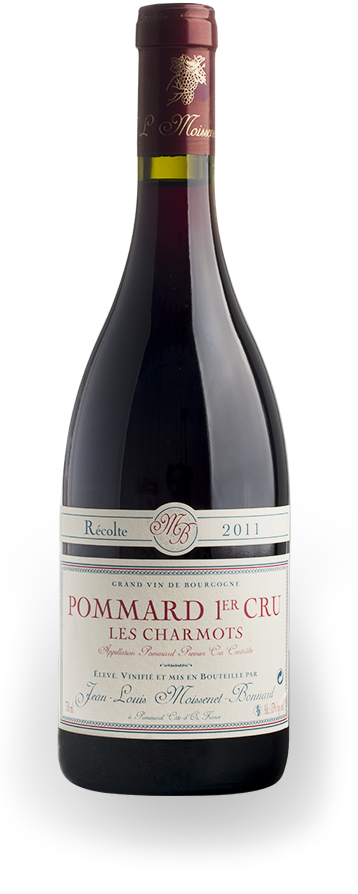
Pommard 1er cru « Les Epenots »
The parcel
In Old French "espineaul" refers to a place covered with thorn bushes.
This 90 ares 13 ca (about 2.2271 acres) plot was given to my grand-mother (Mrs. Henri Lamarche) in 1933 as a dowry on her marriage.
To promote biodiversity and mycorrhization, grass grows between the rows and ground cover under the rows.
Winemaking and breeding
Grapes are harvested by hand, sorted and destemmed.
Vinification takes 4 weeks, including 21 days for alcoholic fermentation.
Then ageing takes place over 18 months in oak barrels, 30% of which are new.
Tasting
Les EPENOTS is one of the two Pommard Grand Premier Crus. This gentleman among wines shows great presence, a superb crimson red colour, and a complex personality. It opens with notes of liquorice, black fruits (blackberries, blackcurrants) and accents of flowers (peonies, roses, violets) and spices. On the palate it is balanced, full-bodied and smooth, with fine tannins and breathtaking length. With its excellent cellaring potential, I often compare it to a wild pearl with infinite lustre.
Food and wine pairings
Main dishes: duck with cherries, beef fillet en croute with morels and figs, Burgundy-style hare, thick-cut bison steak with sautéed potatoes and blackcurrant sauce.
Cheeses: Soumaintrain, Salers, Cîteaux, Langres, Morbier.
Desserts: Italian chocolate amaretto torta, chocolate and blackberry swiss-roll, Black Forest soufflé.
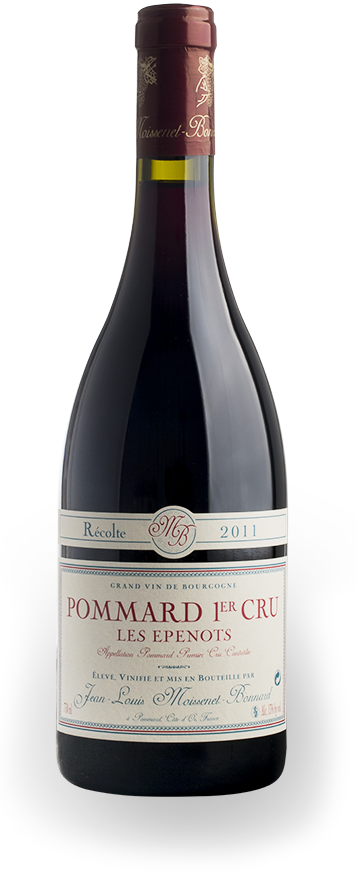
Pommard 1er cru « Les Pézerolles »
The parcel
Mentions of this place go as far back as the 13th century: first "poizerolles" and then "Pesserolles". In Old French, "pèze" means "chickpea"! In 1280 the Bailiff Jacques de Pommard owned 20 "ouvrées" of vines (about 85.7 ares, or 2.1176 acres) here. By 1700, a large portion was owned by the Brunet family, who added the place name to their family name to become the Brunet de Pézerolles family. Covering a surface area of 25 are 35 ca (about 0.6264 acres), it contains vines planted in 1957.
For my wife and me, this plot holds a special place in our hearts, as this was where it all began. Between 1984 and 1988 we worked it in addition to our work. Thanks to this work my grand-father, Henri Lamarche, learned through the Pommard grapevine that I had made a good start as a wine-maker, and in 1987 he suggested that I took over the Pommard domaine.
Winemaking and breeding
Grapes are harvested by hand, sorted and destemmed. Vinification takes 3–4 weeks, including 12–18 days for alcoholic fermentation. Then ageing takes place over 12 months in oak barrels, 30% of which are new.
Tasting
This wine has a deep crimson colour. It has an intense, very complex nose on notes of kirsch, enhanced by a robust, powerful mouthfeel on notes of black fruits, and ending with a chocolate, vanilla finish. This is an excellent wine for keeping, that always presents itself with discretion and restraint.
Food and wine pairings
It will delight your taste-buds with a haunch of venison with ceps, tarte tatin of duck fillet and foie gras, or roast wild boar back.
And it is delicious with cheeses such as Picodon de la Drôme, Fourme du Cantal.
Desserts: pear with dark chocolate, spiced prunes in red wine, brownies with nuts and cranberries.
Ideal serving temperature: 16°.
